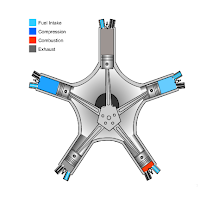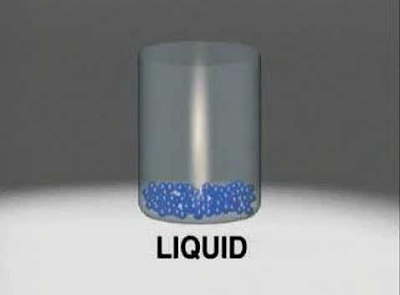Radial Engine
Radial engine:-
The radial
engine is an internal combustion engine configuration in which the cylinders
point outward from a central crankshaft like the spokes on a wheel. This configuration was
very commonly used in aircraft engines before being superseded by turbo-shaft
and turbojet engines. It is a reciprocating engine.
Although
not that used nowadays radial engine is a cute little engine that was in the
beginning of the aerospace transportation. It was very helpful and mainly used
because of its small weight and size. That makes it comfortable and suitable
for any machine that is close of space. Despite of its small size and weight it
does not make it less powerful than other engines.
The same way the in-line engines are more powerful
with more cylinders it is or powerful with more rows of cylinders. It was also
comfortable for the World War II airplanes when the engine was in its peak.
When it is war you need more space for fuel, power, weapons and bullets than
any other things and than any other time.Engine Assembly:-
The cylinders are connected
to the crankshaft with a master and articulating rod assembly. One cylinder has
a master rod with a direct attachment to the crankshaft. The remaining
cylinders pin their connecting rods attachments to rings around the edge of the
master rod (see animation). Four-stroke radials almost always have an odd
number of cylinders, so that a consistent every other piston firing order can
be maintained, providing smooth operation.
Engine Mechanism Process:-
This
is achieved by the engine taking two revolutions of the crankshaft to complete
the four strokes.
Which means the firing order for a 9-cylinder radial
engine is 1,3,5,7,9,2,4,6,8 and then again back to cylinder number 1. This
means that there is always a two-piston
gap between the piston on its power stroke and the next piston on fire (the
piston on compression).
If
an even number of cylinders was used the firing order would be something
similar to 1,3,5,7,9,2,4,6,8,10 which leaves a three-piston gap between firing
pistons on the first crank shaft revolution, and only one piston gap on the
second crankshaft revolution. This leads to an uneven firing order within the
engine, and is not ideal.
Most radial engines use overhead poppet valves driven
by push rods and lifters on a cam plate which is concentric with the crankshaft,
with a few smaller radials. A few engines utilize sleeve valves instead.






Thanks to share this useful information sir.
ReplyDeletePlease keep it up
Most welcome asad bro!
DeleteZain sab;
ReplyDeleteV inserting topic,Thanx for sare it.
Zain sab;
ReplyDeleteV inserting topic,Thanx for sare it.